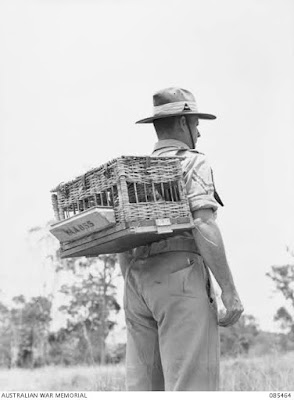Messenger pigeons only fly in one direction: back to their home loft. Meaning they can’t be sent on a ‘mission’ or to an alternate location. Their usefulness therefore relies on the foresight and ability to transport them to, and sometimes keep them at, locations where the origin of a message would be relevant to those back at the loft. During both WWI and WWII pigeons were carried out in the field by soldiers in ‘pigeon-baskets’ made from bamboo and net (image II) and the innovative creation of transportable lofts (image III) enabled flocks of pigeons and their homing location to be moved where required. With pigeons able to learn and adapt to these new homing locations in about ten days. In attracting a pigeon back to its loft it certainly helps if the pigeon is hungry, a method still used in pigeon racing today. An owner of racing pigeons participating in races held at Murrumbateman earlier this year spoke with RiotACT on this matter, commenting: “they’ve always got to be a bit hungry … you don’t send them out with a full tummy” (31.07.2021). Though it’s certainly a double edge sword, with numerous reports existing of messenger pigeons stopping for food during their flight back home. Having said all that, pigeons have successfully completed round-trip flights; having been taught to fly between two locations by placing their food at one location different from their loft location. This method saw the establishment of the first airmail service, the Great Barrier Pigeon-Gram Service, which ran between 1897 to 1908 between Auckland, New Zealand and Great Barrier Island. Along with the first airmail stamp (image I). Though pigeons are not the only birds reported to complete round-trip flights. A canary in 1935 was used by staff of a shop in Marblehead, Massachuesetts, to send messages to a tailor’s shop 100 yards down the street: the canary would deliver the message and return home to the original shop.



